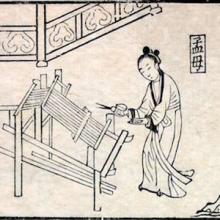Children
Long Teaching Module: Women in the Islamic World, 600-1600
From its inception in the early 7th century up to the present day, women have played a vital role in shaping Islamic history.

Renunciation case against Gertrudis de Escobar, Mexico, 1659
This document is the proceedings of an 1659 Inquisition case brought against a 14 year old girl. The girl, named Gertrudis de Escobar, was accused of the crime of renouncing God. Gertrudis de Escobar was the child of a black person and a white person, termed at that time a mulata.

Activity: Material Culture and Childhood (20th c.)
Childhood is an ever-changing concept that varies from culture to culture across time and space, yet people often think of childhood as universal. Teaching students about children in the past is often a challenging endeavor for this very reason.

Florilegium Urbanum
Inspired by the medieval concept of a textual anthology illuminating specific topics, Florilegium Urbanum allows the user to explore more than 200 short sources and excerpts from longer texts dealing with medieval English towns.
Broadside Ballads Online
This website highlights 16th-, 17th-, and 18th-century broadside ballads. These were popular songs (frequently with lavish woodcut illustrations) sold at a relatively affordable price and widely circulated.
Long Teaching Module: Children in the Slave Trade
From the 16th to the 18th centuries, an estimated 12 million Africans crossed the Atlantic to the Americas in the trans-Atlantic slave trade. Used on plantations throughout the United States, Latin America and the Caribbean, enslaved Africans were shipped largely from West Africa.
Long Teaching Module: African Scouting (20th c.)
Conceived by General Sir Robert Baden Powell to reduce class tensions in early 20th-century Britain, the Boy Scout movement evolved into an international youth movement that offered a romantic program of vigorous outdoor life for boys and adolescents as a cure for the physical decline and social

COLLAGE The London Picture Archive
Reproductions of paintings, watercolors, drawings, and sculptures provide more than a glimpse into the history of London and London life from the 15th century to the present.
Long Teaching Module: Children in Ancient China
The unprecedented interest in the child who assumed unique importance in the Han period was set into motion by a convergence of historically-specific conditions: (1) the establishment in the Qin dynasty (221-207 BCE) and the further development in Han times (206 BCE-220 CE) of a merit-based civil
